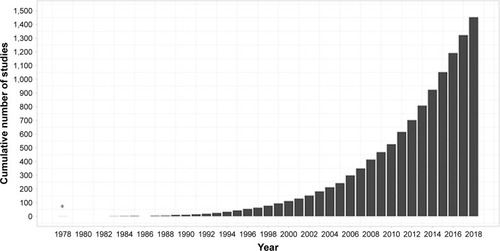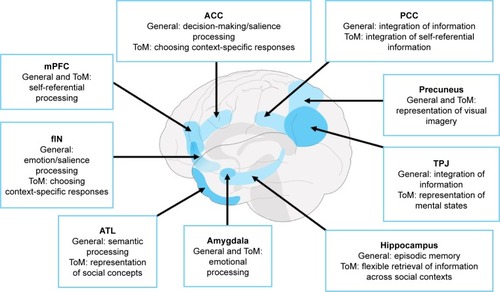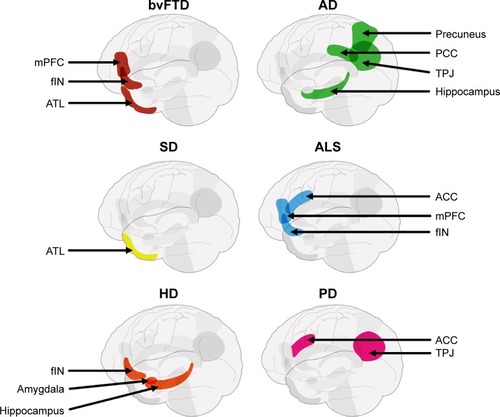Figures & data
Figure 1 The exponential increase in number of published articles on theory of mind since its inception.

Figure 2 A distributed brain network supporting ToM reasoning, highlighting the corresponding putative general cognitive function and ToM-specific roles of each region.
Abbreviations: ACC, anterior cingulate cortex; ATL, anterior temporal lobe; fIN, frontoinsular; mPFC, medial prefrontal cortex; PCC, posterior cingulate cortex; TPJ, temporoparietal junction; ToM, theory of mind.

Figure 3 Schematic displaying differential vulnerability of key nodes of the ToM network across neurodegenerative disorders.
Abbreviations: ACC, anterior cingulate cortex; AD, Alzheimer’s disease; ALS, amyotrophic lateral sclerosis; ATL, anterior temporal lobe; bvFTD, behavioral variant of frontotemporal dementia; fIN, frontoinsular; HD, Huntington’s disease; mPFC, medial prefrontal cortex; PCC, posterior cingulate cortex; PD, Parkinson’s disease; SD, semantic dementia; TPJ, temporoparietal junction; ToM, theory of mind.

